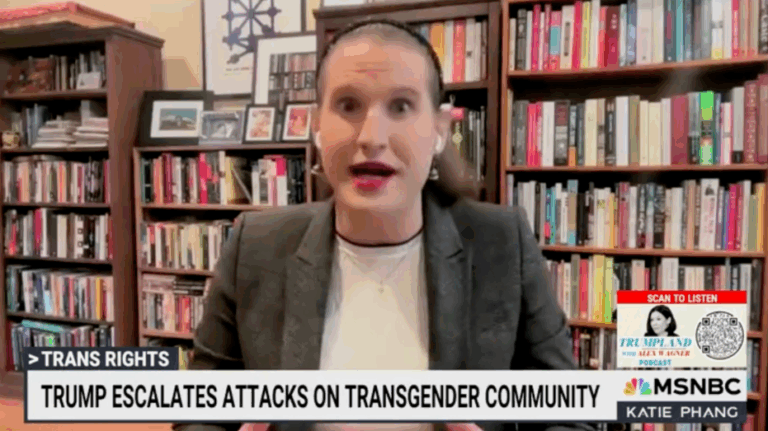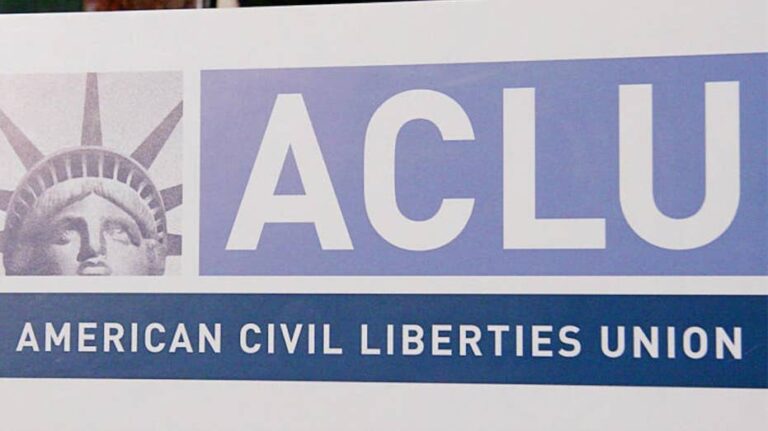
President Donald Trump is correct that states and local school boards should control students’ education. They do, and they have since the earliest days of our republic. But his decision to gut the Department of Education—the only federal department dedicated to educational opportunity for all students in America—isn’t about control, efficiency or even test scores. It’s about redistributing money and opportunity from the many to the few.
From curriculum to graduation requirements, states and local school districts already control education. The federal government provides about $1 in every $7 spent on public schools, which 90% of American kids attend. That funding is crucial to helping create opportunity for all, ensuring poor kids, kids with disabilities and first-generation college students get the same shot at success as everyone else. And which states depend on that funding most? Red states, because they have more kids who qualify for the funds appropriated by Congress and distributed by the Education Department.
Federal funding is not used to impose any curriculum or ideology—that’s actually not allowed by law—and those laws and norms shouldn’t be broken, regardless of who is president. By the same token, the funding should also not be used as a cudgel to force educators to kowtow to anyone’s political ideology or personal beliefs.
SENATORS FORMALLY INTRODUCE BILL TO ELIMINATE DEPARTMENT OF EDUCATION
While the Education Department was established by Congress on a bipartisan basis in 1979, support for public schools has deeper roots. Lyndon B. Johnson taught in a rural Texas school where students were showing up without shoes, and when he became president, he acted to support kids who grew up in poverty. Every president except for the current one has built on that foundation.
Trump can’t abolish the Education Department. Only Congress can do that. So he and Elon Musk are taking a wrecking ball to it, first by firing nearly half its staff and then by planning to parcel off its pieces to other understaffed departments that have little or no relevant expertise or necessary resources, a move that some Republicans are now questioning.
It is impossible to imagine how 7.5 million kids with disabilities, 26 million kids from low-income families or the 13 million young people who get financial aid for college won’t be disserved if no one is around to make sure the funding gets where it’s needed—or even to answer the phone. Teachers will be laid off. Class sizes will grow. And students with the fewest resources and greatest needs will pay the highest price.
LINDA MCMAHON: MY VISION FOR ELIMINATING THE DEPARTMENT OF EDUCATION
Mississippi, which saw a recent rebound in reading scores, gets nearly a quarter of its funding for local K-12 schools from federal sources, followed by South Dakota, Montana, Arkansas, North Carolina, Kentucky, Arizona, Oklahoma and Tennessee—all of which get about 20 percent of school funding from the federal government. New York state, by contrast, gets just 7.2 percent.
Regardless of whether these funds are used to pay for tax cuts for billionaires or for school vouchers, it means kids will suffer.
We worry about the struggling readers, the kids who need speech or occupational therapy and the families that benefit from before- and after-school programs. Who will get them the tutoring or the specialists they need if their families can’t afford the bill? Who will investigate parents’ complaints about their children’s civil rights being violated at school when most of the Office for Civil Rights staff was eliminated?
I think about an 11th-grade student at Widener Memorial School in Philadelphia, the only Pennsylvania school exclusively serving special education students. That student is in a wheelchair. How will she get the physical and occupational therapy she needs to thrive if that money is taken away from her?
Education Secretary Linda McMahon has suggested making Title I funding, currently designated for schools in high-poverty communities, a no-strings-attached block grant that would not guarantee services get to the students and schools that desperately need it and get it now.
States, for example, could then use the federal money for private school vouchers, so those who currently get those services in public schools lose. And who would win? The data shows that it’s really a redistribution of wealth. Money no longer goes to poor kids; instead, 70 percent of public dollars for vouchers goes to wealthy families with children already in private schools. In the last election, voters rejected private school vouchers wherever they were on the ballot because they support public schools.
CLICK HERE FOR MORE FOX NEWS OPINION
If money didn’t make a difference in student success, there wouldn’t be such a fight over it. Newer research says what anyone with common sense knows: Money matters. Research overwhelmingly shows that increases in K-12 funding improve student academic achievement, particularly for children living in poverty. Yet this administration is putting us on a trajectory to achieve less with less.
Trump’s end-run around Congress is not only illegal but overwhelmingly unpopular. Regardless of whether people know what the Education Department does, they don’t like the message that shuttering it sends. Americans don’t want their president stripping opportunity from children and young people.
Finally, closing the Education Department sets up a Hobson’s choice because, just to maintain current services, families will end up paying more state and local taxes. So we end up with tax cuts for the wealthy, and tax increases for everyone else.
States are already reeling from the chaos the funding cuts have sowed. The administration’s abrupt halt of billions in federal pandemic aid payouts last month shocked state officials, leaving them scrambling – and suing. Grants to learn what reading and math programs are effective, to address the teacher shortage in rural communities, to help young people with disabilities navigate life after high school and for a civics education program that I once taught have all been halted.
The AFT is fighting Trump’s actions, including in the courts. That’s not because the department is a perfect agency. It isn’t. Testing should be de-emphasized, and paperwork should be reduced. Like any entity, it could undoubtedly be more efficient. We should also be doing much more to elevate career and technical education, making it, along with college prep, a viable pathway for students—something that Secretary McMahon and I both believe.
But to eviscerate the federal role in education—which is to equalize opportunity—is not just illegal, it’s wrong, especially to fund vouchers that voters don’t want or to give a tax cut to people who don’t need it. We must protect our kids and communities.
President Donald Trump is correct that states and local school boards should control students’ education. They do, and they have since the earliest days of our republic. But his decision to gut the Department of Education—the only federal department dedicated to educational opportunity for all students in America—isn’t about control, efficiency or even test scores. It’s about redistributing money and opportunity from the many to the few.
From curriculum to graduation requirements, states and local school districts already control education. The federal government provides about $1 in every $7 spent on public schools, which 90% of American kids attend. That funding is crucial to helping create opportunity for all, ensuring poor kids, kids with disabilities and first-generation college students get the same shot at success as everyone else. And which states depend on that funding most? Red states, because they have more kids who qualify for the funds appropriated by Congress and distributed by the Education Department.
Federal funding is not used to impose any curriculum or ideology—that’s actually not allowed by law—and those laws and norms shouldn’t be broken, regardless of who is president. By the same token, the funding should also not be used as a cudgel to force educators to kowtow to anyone’s political ideology or personal beliefs.
SENATORS FORMALLY INTRODUCE BILL TO ELIMINATE DEPARTMENT OF EDUCATION
While the Education Department was established by Congress on a bipartisan basis in 1979, support for public schools has deeper roots. Lyndon B. Johnson taught in a rural Texas school where students were showing up without shoes, and when he became president, he acted to support kids who grew up in poverty. Every president except for the current one has built on that foundation.
Trump can’t abolish the Education Department. Only Congress can do that. So he and Elon Musk are taking a wrecking ball to it, first by firing nearly half its staff and then by planning to parcel off its pieces to other understaffed departments that have little or no relevant expertise or necessary resources, a move that some Republicans are now questioning.
It is impossible to imagine how 7.5 million kids with disabilities, 26 million kids from low-income families or the 13 million young people who get financial aid for college won’t be disserved if no one is around to make sure the funding gets where it’s needed—or even to answer the phone. Teachers will be laid off. Class sizes will grow. And students with the fewest resources and greatest needs will pay the highest price.
LINDA MCMAHON: MY VISION FOR ELIMINATING THE DEPARTMENT OF EDUCATION
Mississippi, which saw a recent rebound in reading scores, gets nearly a quarter of its funding for local K-12 schools from federal sources, followed by South Dakota, Montana, Arkansas, North Carolina, Kentucky, Arizona, Oklahoma and Tennessee—all of which get about 20 percent of school funding from the federal government. New York state, by contrast, gets just 7.2 percent.
Regardless of whether these funds are used to pay for tax cuts for billionaires or for school vouchers, it means kids will suffer.
We worry about the struggling readers, the kids who need speech or occupational therapy and the families that benefit from before- and after-school programs. Who will get them the tutoring or the specialists they need if their families can’t afford the bill? Who will investigate parents’ complaints about their children’s civil rights being violated at school when most of the Office for Civil Rights staff was eliminated?
I think about an 11th-grade student at Widener Memorial School in Philadelphia, the only Pennsylvania school exclusively serving special education students. That student is in a wheelchair. How will she get the physical and occupational therapy she needs to thrive if that money is taken away from her?
Education Secretary Linda McMahon has suggested making Title I funding, currently designated for schools in high-poverty communities, a no-strings-attached block grant that would not guarantee services get to the students and schools that desperately need it and get it now.
States, for example, could then use the federal money for private school vouchers, so those who currently get those services in public schools lose. And who would win? The data shows that it’s really a redistribution of wealth. Money no longer goes to poor kids; instead, 70 percent of public dollars for vouchers goes to wealthy families with children already in private schools. In the last election, voters rejected private school vouchers wherever they were on the ballot because they support public schools.
CLICK HERE FOR MORE FOX NEWS OPINION
If money didn’t make a difference in student success, there wouldn’t be such a fight over it. Newer research says what anyone with common sense knows: Money matters. Research overwhelmingly shows that increases in K-12 funding improve student academic achievement, particularly for children living in poverty. Yet this administration is putting us on a trajectory to achieve less with less.
Trump’s end-run around Congress is not only illegal but overwhelmingly unpopular. Regardless of whether people know what the Education Department does, they don’t like the message that shuttering it sends. Americans don’t want their president stripping opportunity from children and young people.
Finally, closing the Education Department sets up a Hobson’s choice because, just to maintain current services, families will end up paying more state and local taxes. So we end up with tax cuts for the wealthy, and tax increases for everyone else.
States are already reeling from the chaos the funding cuts have sowed. The administration’s abrupt halt of billions in federal pandemic aid payouts last month shocked state officials, leaving them scrambling – and suing. Grants to learn what reading and math programs are effective, to address the teacher shortage in rural communities, to help young people with disabilities navigate life after high school and for a civics education program that I once taught have all been halted.
The AFT is fighting Trump’s actions, including in the courts. That’s not because the department is a perfect agency. It isn’t. Testing should be de-emphasized, and paperwork should be reduced. Like any entity, it could undoubtedly be more efficient. We should also be doing much more to elevate career and technical education, making it, along with college prep, a viable pathway for students—something that Secretary McMahon and I both believe.
But to eviscerate the federal role in education—which is to equalize opportunity—is not just illegal, it’s wrong, especially to fund vouchers that voters don’t want or to give a tax cut to people who don’t need it. We must protect our kids and communities.






